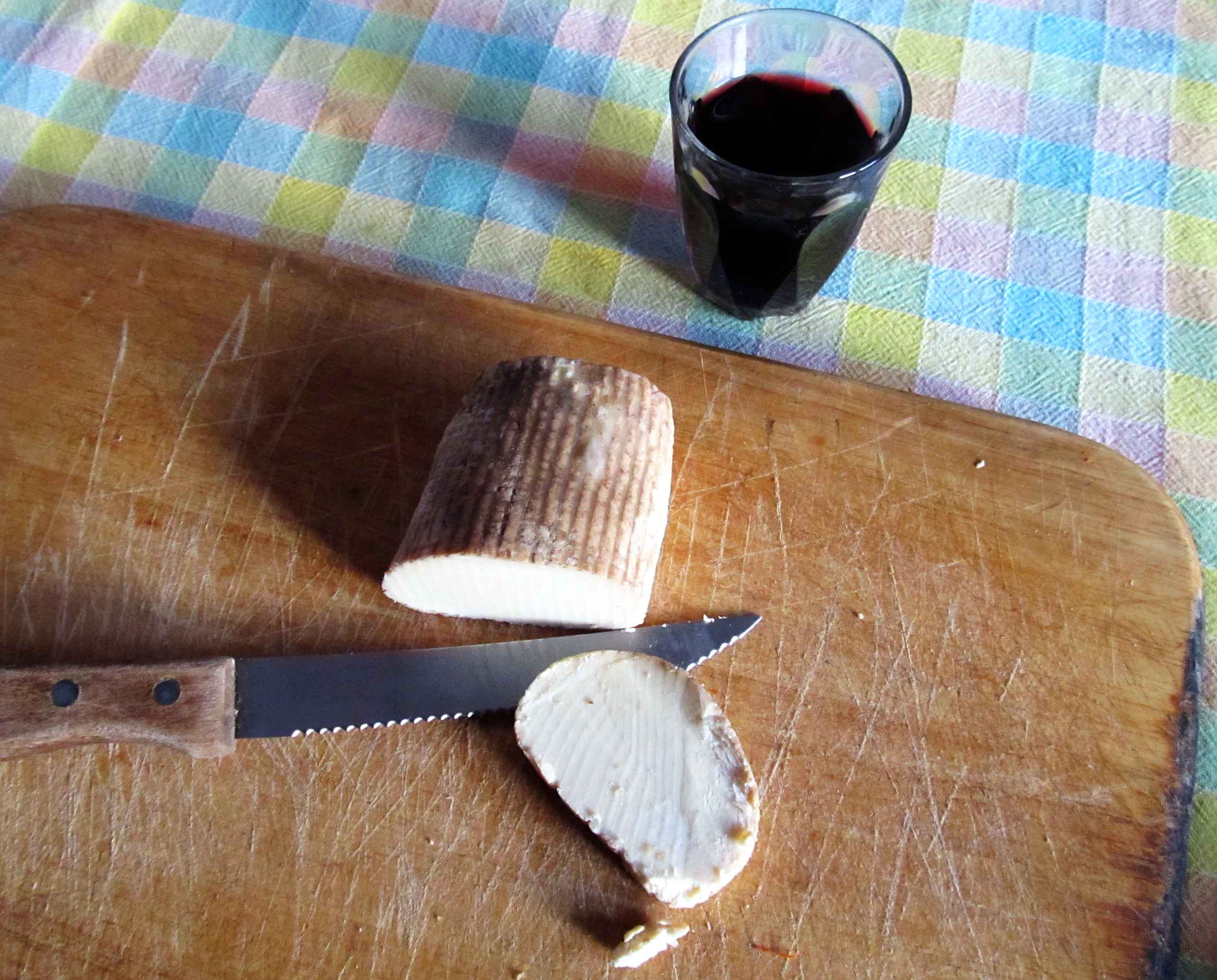|
Oscypek
Oscypek (, Polish plural: ''oscypki''), rarely oszczypek, is a smoked cheese made of salted sheep milk exclusively in the Tatra Mountains region of Poland. Oscypek is made by an expert named "baca", a term also denoting a shepherd in the mountains. The cheese is a traditional holiday cheese in some European countries and is often pan-fried and served with cranberry jam (''żurawina'') on the side. Process and varieties A similar cheese is made in the Slovak Tatra Mountains under the name oštiepok. The cheeses differ in the ratio of their ingredients, the cheesemaking process and the characteristics of the final product. Oscypek needs to be made from at least 60% sheep's milk, and must weigh between 600 and 800g and measure between 17 and 23 cm. It can only be produced between late April to early October, when the sheep used is fed on fresh mountain grass. Oscypek is made using salted sheep's milk, with the addition of cows' or goats' milk strictly regulated by the pro ... [...More Info...] [...Related Items...] OR: [Wikipedia] [Google] [Baidu] |
Redykołka
Redykołka is a type of cheese produced in the Podhale region of Poland. It is sometimes known as the "younger sister" of the Oscypek cheese and the two are occasionally confused. The similarity comes from the fact that redykołka is traditionally made using leftover Bundz from Oscypek production. The protected recipe describes the cheese as solid, with a soft and elastic inside, a strong smoked aroma, and with a spicy and slightly salty taste. It is often made in the shape of animals, hearts, or decorative wreaths. History Redykołka has been popular as a form of a gift, made and given in pairs for special occasions. It was also given out to commemorate the return of sheep from a months long grazing period in the mountain pastures, a celebration known as '' redyk''. The name "redykołka" used to refer to any kind of cheese gift. Redykołka is registered as a European Union protected designation of origin The protected designation of origin (PDO) is a type of geographical ... [...More Info...] [...Related Items...] OR: [Wikipedia] [Google] [Baidu] |
Smoked Cheeses
Smoked cheese is any cheese that has been specially treated by smoke-curing. It typically has a yellowish-brown outer pellicle which is a result of this curing process. Process Smoke-curing is typically done in one of two ways: cold-smoking and hot-smoking. The cold-smoking method (which can take up to a month, depending on the food) smokes the food at between 20° and 30° C (68° and 86° F). Hot-smoking partially or completely cooks the food by treating it at temperatures ranging from 40° to 90 °C (104° to 194° F). Another method, typically used in less expensive cheeses, is to use artificial smoke flavoring to give the cheese a smoky flavoring and food coloring to give the outside the appearance of having been smoked in the more traditional manner. Common smoked cheeses Some smoked cheeses commonly produced and sold include smoked Gruyère, smoked Gouda (rookkaas), Provolone, Rauchkäse, Scamorza, Sulguni, Oscypek, Fynsk rygeost, and smoked Cheddar. Gall ... [...More Info...] [...Related Items...] OR: [Wikipedia] [Google] [Baidu] |
Oštiepok
Oštiepok ( Slovak; plural: ''oštiepky'') is a traditional smoked sheep milk cheese made in Slovakia. Oštiepok is a protected trade name under the EU's protected geographical indication. A similar cheese is made by Gorals under the name Oscypek. The cheeses differ in ingredients' ratios, cheesemaking process and the characteristics of the final products. See also * Žinčica – drink made of sheep's milk whey * Parenica – traditional Slovak cheese * Slovak cuisine * List of smoked foods * List of stretch-curd cheeses This is a list of stretch-curd cheeses, comprising cheeses prepared using the '' pasta filata'' technique. The cheeses manufactured from this technique undergo a plasticising and kneading treatment of the fresh curd in hot water, which gives the ... References Cow's-milk cheeses Sheep's-milk cheeses Smoked cheeses Stretched-curd cheeses Slovak cheeses {{Slovakia-cuisine-stub ... [...More Info...] [...Related Items...] OR: [Wikipedia] [Google] [Baidu] |
Smoked Cheese
Smoked cheese is any cheese that has been specially treated by smoke-curing. It typically has a yellowish-brown outer pellicle which is a result of this curing process. Process Smoke-curing is typically done in one of two ways: cold-smoking and hot-smoking. The cold-smoking method (which can take up to a month, depending on the food) smokes the food at between 20° and 30° C (68° and 86° F). Hot-smoking partially or completely cooks the food by treating it at temperatures ranging from 40° to 90 °C (104° to 194° F). Another method, typically used in less expensive cheeses, is to use artificial smoke flavoring to give the cheese a smoky flavoring and food coloring to give the outside the appearance of having been smoked in the more traditional manner. Common smoked cheeses Some smoked cheeses commonly produced and sold include smoked Gruyère, smoked Gouda (rookkaas), Provolone, Rauchkäse, Scamorza, Sulguni, Oscypek, Fynsk rygeost, and smoked Cheddar. Gal ... [...More Info...] [...Related Items...] OR: [Wikipedia] [Google] [Baidu] |
Protected Designation Of Origin
The protected designation of origin (PDO) is a type of geographical indication of the European Union aimed at preserving the designations of origin of food-related products. The designation was created in 1992 and its main purpose is to designate products that have been produced, processed and developed in a specific geographical area, using the recognized know-how of local producers and ingredients from the region concerned. Features The characteristics of the products protected are essentially linked to their terroir. The European or UK PDO logo, of which the use is compulsory, documents this link. European Regulation 510/2006 of 20 March 2006 acknowledges a priority to establish a community protection system that ensures equal conditions of competition between producers. This European Regulation is intended to guarantee the reputation of regional products, adapt existing national protections to make them comply with the requirements of the World Trade Organization, and info ... [...More Info...] [...Related Items...] OR: [Wikipedia] [Google] [Baidu] |
Protected Geographical Indication
Three European Union schemes of geographical indications and Traditional food, traditional specialties, known as protected designation of origin (PDO), protected geographical indication (PGI), and traditional speciality guaranteed (TSG), promote and protect names of agricultural products and foodstuffs, wines and spirits. Products registered under one of the three schemes may be marked with the logo for that scheme to help identify those products. The schemes are based on the legal framework provided by the EU Regulation No 1151/2012 of the European Parliament and of the Council of 21 November 2012 on quality schemes for agricultural products and foodstuffs. This regulation applies within the EU as well as in Northern Ireland. Protection of the registered products is gradually expanded internationally via bilateral agreements between the EU and non-EU countries. It ensures that only products genuinely originating in that region are allowed to be identified as such in commerce. The ... [...More Info...] [...Related Items...] OR: [Wikipedia] [Google] [Baidu] |
Nowy Targ County
Nowy Targ County () is a unit of territorial administration and local government (powiat) in Lesser Poland Voivodeship, southern Poland, on the Slovak border. It came into being on January 1, 1999, as a result of the Polish local government reforms passed in 1998. Its administrative seat and largest town is Nowy Targ, which lies south of the regional capital Kraków. The county also contains the towns of Rabka-Zdrój, lying north of Nowy Targ, and Szczawnica, east of Nowy Targ. The county covers an area of . As of 2006 its total population is 181,878, out of which the population of Nowy Targ is 33,493, that of Rabka-Zdrój is 13,031, that of Szczawnica is 7,334, and the rural population is 128,020. Neighbouring counties Nowy Targ County is bordered by Sucha County to the north-west, Myślenice County to the north, Limanowa County to the north-east, Nowy Sącz County to the east and Tatra County to the south. It also borders Slovakia to the south. Administrative division T ... [...More Info...] [...Related Items...] OR: [Wikipedia] [Google] [Baidu] |
Tatra County
__NOTOC__ Tatra County () is a unit of territorial administration and local government (powiat) in Lesser Poland Voivodeship, southern Poland, on the Slovak border. It came into being on January 1, 1999, as a result of the Polish local government reforms passed in 1998. Its administrative seat and only town is Zakopane, which lies south of the regional capital Kraków. The county takes its name from the Tatra mountain range, which covers most of its territory. The county covers an area of . As of 2006 its total population is 65,393, out of which the population of Zakopane is 27,486 and the rural population is 37,907. The mountainous southern part of the county (211 km2) makes up the Tatra National Park. This area, together with the Slovak Tatra National Park across the border, make up a UNESCO-designated biosphere reserve. Neighbouring counties Tatra County is bordered by only one other Polish county, Nowy Targ County, which lies to the north. To the east, west and sout ... [...More Info...] [...Related Items...] OR: [Wikipedia] [Google] [Baidu] |
Limanowa County
__NOTOC__ Limanowa County () is a unit of territorial administration and local government (powiat) in Lesser Poland Voivodeship, southern Poland. It came into being on January 1, 1999, as a result of the Polish local government reforms passed in 1998. Its administrative seat and largest town is Limanowa, which lies south-east of the regional capital Kraków. The only other town in the county is Mszana Dolna, lying west of Limanowa.The county is divided between Gorals in the territories of gmina Mszana Dolna and gmina Niedziewiedź and Lachs in the rest of the territory. The county covers an area of . As of 2019 its total population is 121,804, out of which the population of Limanowa is 15,157, that of Mszana Dolna is 7,944, and the rural population is 108,628. Neighbouring counties Limanowa County is bordered by Bochnia County and Brzesko County to the north, Nowy Sącz County to the east, Nowy Targ County to the south-west, and Myślenice County to the west. Administrat ... [...More Info...] [...Related Items...] OR: [Wikipedia] [Google] [Baidu] |
Cieszyn County
__NOTOC__ Cieszyn County () is a unit of territorial administration and local government (powiat) in Silesian Voivodeship, southern Poland, on the Czech and Slovak border. It came into being on January 1, 1999, as a result of the Polish local government reforms passed in 1998. The county's administrative seat and largest town is Cieszyn, which lies on the Czech border south-west of the regional capital Katowice. The county also contains four other towns: Ustroń, east of Cieszyn, Skoczów, north-east of Cieszyn, Wisła, south-east of Cieszyn, and Strumień, north-east of Cieszyn. The county covers an area of . As of 2019 its total population is 178,145, out of which the population of Cieszyn is 34,513, that of Ustroń is 16,073, that of Skoczów is 14,385, that of Wisła is 11,132, that of Strumień is 3,718, and the rural population is 98,324. History The county was first created after Revolutions of 1848 in the Austrian Empire in 1850 as ''Politischer Bezirk Teschen'', o ... [...More Info...] [...Related Items...] OR: [Wikipedia] [Google] [Baidu] |
Curing (food Preservation)
Curing is any of various food preservation and flavoring processes of foods such as meat, fish and vegetables, by the addition of salt, with the aim of drawing moisture out of the food by the process of osmosis. Because curing increases the solute concentration in the food and hence decreases its water potential, the food becomes inhospitable for the microbe growth that causes food spoilage. Curing can be traced back to antiquity, and was the primary method of preserving meat and fish until the late 19th century. Dehydration was the earliest form of food curing. Many curing processes also involve smoking, spicing, cooking, or the addition of combinations of sugar, nitrate, and nitrite. Meat preservation in general (of meat from livestock, game, and poultry) comprises the set of all treatment processes for preserving the properties, taste, texture, and color of raw, partially cooked, or cooked meats while keeping them edible and safe to consume. Curing has been the dominant m ... [...More Info...] [...Related Items...] OR: [Wikipedia] [Google] [Baidu] |


